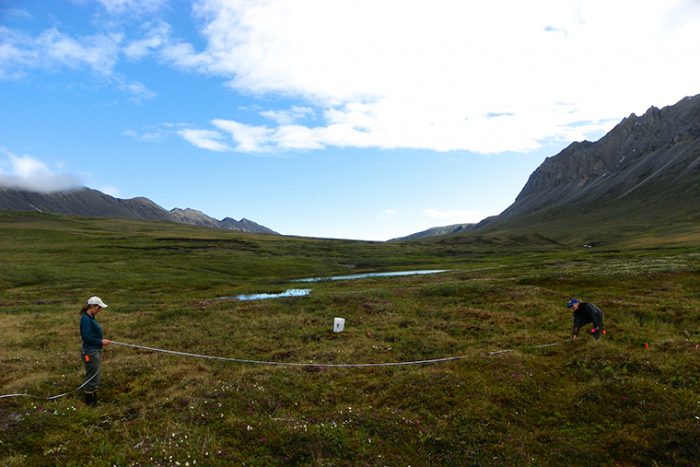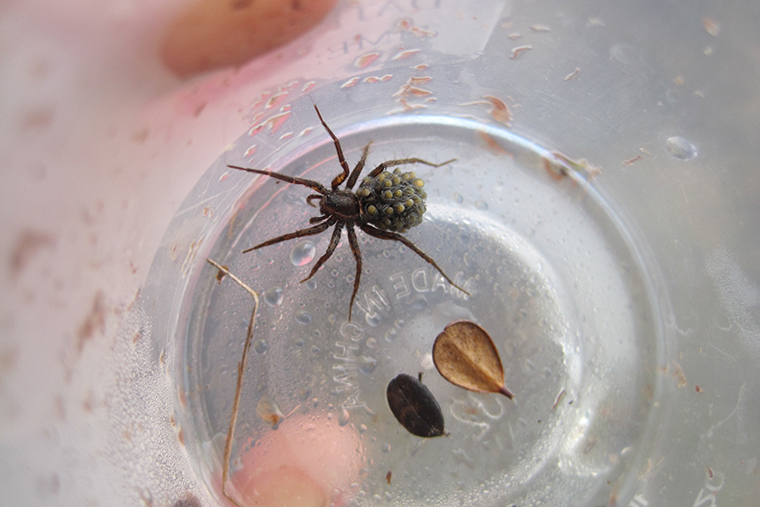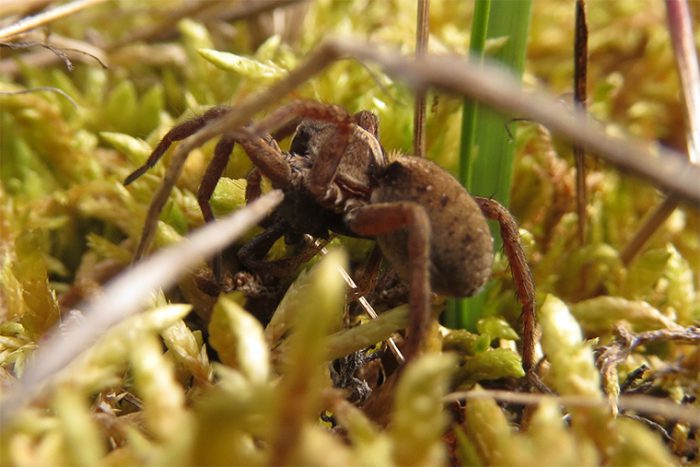Welcome back to our Science Odyssey Contest event, where we're posting STEM articles from May 2 to May 17. To enter the contest, you can find details at the bottom of this post.
The science behind climate change and what is causing it is fairly well settled. But answering the question of exactly how will it affect different ecosystems around the globe is far more complex.
That's the thing about science. Even when researchers feel that they can predict what will happen in a certain situation, they still have to conduct studies and learn from what they observe. Because more often than not, the results are, well, unpredictable!
The big bad wolf (spider)
One example of this is a set of recent studies by Amanda Koltz of the University of Washington at St. Louis of the Arctic wolf spider.
On one hand, this key tundra predator is getting bigger and having more babies. But its feeding habits are taking unusual turns... including turning on itself!
And even Amanda, who has been studying them in Alaska for years, doesn't fully know what to expect next.
Big changes, and fast

Researchers set spider traps in the Alaskan tundra. (University of Washington in St. Louis/Nick LaFave)
One of the reasons that that the Arctic tundra is such an interesting place to study is that it is changing more—and more quickly—than most other habitats.
Normally, the tundra has very short summers. Much of the land—known as permafrost—remains frozen all year round, trapping inside it potent greenhouse gases like carbon and methane.
But as the summers have been getting longer and warmer, it has set off a chain reaction. The permafrost and ice is rapidly defrosting, releasing everything from greenhouse gases to fossils to artifacts. Suddenly, the animals that live here are experiencing longer periods of activity.
With interesting results.
Bigger spiders, too

A female Arctic wolf spider carries its babies on its back. (University of Washington in St. Louis/Amanda Koltz)
In the case of the Arctic wolf spider, researchers have noticed for a while that these animals were getting bigger. They were also having more babies.
Bigger spiders. More babies. Sounds like bad news for anything that these spiders eat. But the truth hasn't been so clear cut.
More spiders... more prey?
In 2018, Amanda worked on a study that showed something curious. Areas that had more Arctic wolf spiders actually had more springtails as well, a favourite wolf spider food.
For some reason, it appeared that the more spiders there were, the more diverse their diets were (meaning they ate a greater variety of animals). So even though the springtail population was also exploding due to warmer weather, the spiders weren't necessarily keeping them in check.
And as this video shows, that appeared to actually slow down how greenhouse gases were being released!
Spiders eating spiders
But now a brand new study is showing a bizarre wrinkle. The 'greater variety' of prey the wolf spiders were eating? Those were other young wolf spiders, a.k.a. cannibalism!
This is actually pretty common behaviour in other wolf spider species when the populations get larger than normal. They essentially eat their competition. But here's the tricky part. Amanda and her research team don't really know what this means for the future.
Will cannibalism eventually weaken the spiders? Will the springtail population run amok and start to have negative effects? Or will the whole area slowly find a new normal and get balanced?
Welcome to the strange life of a biologist during climate change. Studying the life of an animal in a remote Arctic ecosystem is hard enough. But studying that animal as its own habitat is also changing?
That's heavy science!
Contest alert
Don't miss our Science Odyssey Contest. Click HERE TO ENTER.

 The Arctic wolf spider's world is changing fast. (University of Washington in St. Louis/Ashley Asmus)
The Arctic wolf spider's world is changing fast. (University of Washington in St. Louis/Ashley Asmus)










❓ ❓ ❓